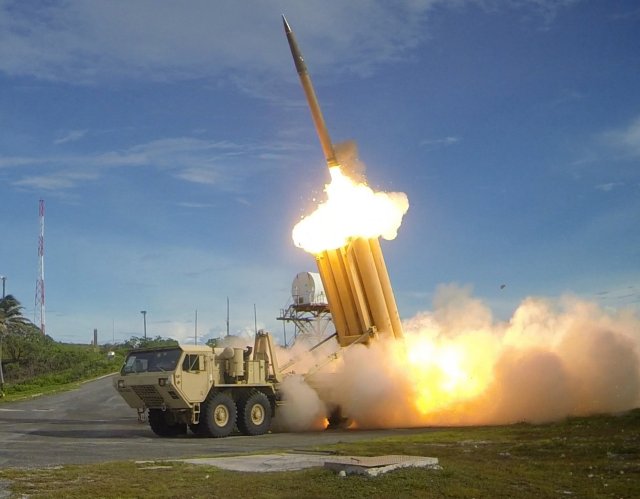| a | |||
|
|
|||
|
Military Defense Industry Technology - MDA BMDS complex tests
|
|||
|
|
|||
| US MDA successfully achieves complex test of layered defense missile system | |||
|
The U.S. Missile Defense Agency (MDA), Ballistic Missile Defense System (BMDS) Operational Test Agency, Joint Functional Component Command for Integrated Missile Defense, U.S. European Command, and U.S. Pacific Command conducted a complex operational flight test of the BMDS demonstrating a layered defense architecture.
|
|||
|
|
|||
 The US Missile Defense Agency completed a complew operational flight test of the BMDS using the Terminal High Altitude Aera Defense weapon system and US Navy's Aegis ballistic missile defense system The US Missile Defense Agency completed a complew operational flight test of the BMDS using the Terminal High Altitude Aera Defense weapon system and US Navy's Aegis ballistic missile defense system |
|||
|
|
|||
|
The test, designated Flight Test Operational-02 Event 2a, was conducted in the vicinity of Wake Island and surrounding areas of the western Pacific Ocean. The test stressed the ability of Aegis Ballistic Missile Defense (BMD) and Terminal High Altitude Area Defense (THAAD) weapon systems to negate two ballistic missile threats while Aegis BMD simultaneously conducted an anti-air warfare operation.
This was a highly complex operational test of the BMDS which required all elements to work together in an integrated layered defense design to detect, track, discriminate, engage, and negate the ballistic missile threats. BMDS assets included: a THAAD battery consisting of a THAAD Fire Control and Communications (TFCC) unit, THAAD launcher, and an Army Navy/Transportable Radar Surveillance and Control Model 2 (AN/TPY-2) radar in terminal mode; a second AN/TPY-2 radar in forward-based mode; Command, Control, Battle Management and Communications (C2BMC); and the USS JOHN PAUL JONES (DDG-53) Aegis BMD-configured ship with its onboard AN/SPY-1 radar. At approximately 11:05 pm EDT (October 31), a Short Range Air Launch Target (SRALT) was launched by a U.S. Air Force C-17 aircraft southeast of Wake Island. The THAAD AN/TPY-2 radar in terminal mode detected the target and relayed track information to the TFCC to develop a fire control solution and provide track information for use by other defending BMDS assets. The THAAD weapon system developed a fire control solution, launched a THAAD interceptor missile, and successfully intercepted the SRALT target. While THAAD was engaging the SRALT, an extended Medium Range Ballistic Missile (eMRBM) was air-launched by another Air Force C-17. The eMRBM target was detected and tracked by multiple BMDS assets including the AN/TPY-2 in forward-based mode, and the USS JOHN PAUL JONES with its AN/SPY-1 radar. Shortly after eMRBM launch, a BQM-74E air-breathing target was also launched and tracked by the USS JOHN PAUL JONES. As a demonstration of layered defense capabilities, both Aegis BMD and THAAD launched interceptors to engage the eMRBM. The USS JOHN PAUL JONES successfully launched a Standard Missile-3 (SM-3) Block IB Threat Upgrade guided missile, but an anomaly early in its flight prevented a midcourse intercept. However, the THAAD interceptor, in its terminal defense role, acquired and successfully intercepted the target. Concurrently, Aegis BMD successfully engaged the BQM-74E air-breathing target with a Standard Missile-2 Block IIIA guided missile. A failure review is currently underway to investigate the SM-3 anomaly. Several other missile defense assets observed the launches and gathered data for future analysis. Participants included the Command, Control, Battle Management, and Communications (C2BMC) Experimental Lab (X-Lab), C2BMC Enterprise Sensors Laboratory (ESL), and the Space Tracking and Surveillance System-Demonstrators (STSS-D). The MDA will use test results to improve and enhance the BMDS. |
|||














